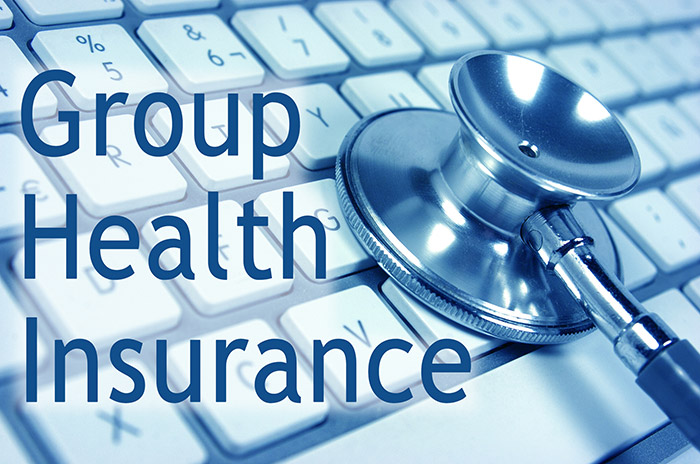The 7-Second Trick For Pacific Prime
Table of ContentsThe Ultimate Guide To Pacific PrimeSome Of Pacific PrimePacific Prime Fundamentals ExplainedLittle Known Facts About Pacific Prime.Rumored Buzz on Pacific Prime

This is since the information were gathered for a duration of strong financial performance. Of the estimated 42 million individuals that were uninsured, almost concerning 420,000 (about 1 percent) were under 65 years old, the age at which most Americans become eligible for Medicare; 32 million were grownups in between ages 18 and 65, around 19 percent of all adults in this age; and 10 million were youngsters under 18 years of age, regarding 13.9 percent of all youngsters (Mills, 2000).
These estimates of the number of persons without insurance are created from the annual March Supplement to the Existing Population Survey (CPS), performed by the Demographics Bureau. Unless or else noted, nationwide estimates of people without medical insurance and percentages of the populace with various sort of protection are based upon the CPS, one of the most extensively used resource of estimates of insurance protection and uninsurance rates.
4 Simple Techniques For Pacific Prime

Still, the CPS is specifically valuable since it creates yearly estimates relatively quickly, reporting the previous year's insurance policy coverage approximates each September, and since it is the basis for a consistent set of estimates for greater than 20 years, enabling evaluation of fads in protection with time. For these reasons, along with the substantial usage of the CPS in other research studies of insurance protection that are presented in this record, we count on CPS estimates, with constraints kept in mind.

The estimate of the variety of uninsured individuals increases when a population's insurance policy status is tracked for a number of years. Over a three-year period starting early in 1993, 72 million people, 29 percent of the united state populace, lacked protection for a minimum of one month. Within a solitary year (1994 ), 53 million people experienced at the very least a month without protection (Bennefield, 1998a)
Six out of every 10 without insurance grownups are themselves employed. Functioning does boost the likelihood that one and one's household members will certainly have insurance policy, it is not an assurance. Even participants of households with two full time wage earners have virtually a one-in-ten possibility of being uninsured (9.1 percent uninsured rate) (Hoffman and Pohl, 2000).
Pacific Prime - The Facts
New immigrants represent a considerable percentage of people without medical insurance. One analysis has attributed a substantial part of the recent development in the dimension of the united state without insurance populace to immigrants that got here in the country between 1994 and 1998 (Camarota and Edwards, 2000). Current immigrants (those that concerned the USA within the past 4 years) do have a high rate of being without insurance (46 percent), but they and their children make up just 6 percent of those without insurance coverage nationally (Holahan et al., 2001).
The connection in between health insurance and accessibility to care is well established, as documented later on in this phase. Although the partnership between health and wellness insurance and wellness results is neither direct neither simple, a substantial scientific and wellness services study literary works links medical insurance protection to enhanced accessibility to care, far better top quality, and boosted individual and population health status.
Degrees of analysis for examining the results of uninsurance. This discussion of wellness insurance policy coverage concentrates mainly on the united state population under age 65 due to the fact that essentially all Americans 65 and older have Medicare or other public insurance coverage. Moreover, it focuses particularly on those without any type of wellness insurance coverage for any size of time.
The smart Trick of Pacific Prime That Nobody is Discussing
The issues encountered by the underinsured remain in some respects similar to those encountered by the uninsured, although they are typically less serious. group insurance plans. Uninsurance and underinsurance, however, involve distinctly different plan issues, and the strategies for addressing them might vary. Throughout this research study and the 5 records to adhere to, the major focus is on persons with no health and wellness insurance coverage and thus no assistance in spending for healthcare past what is offered through charity and safety web establishments
Medical insurance is a powerful element impacting receipt of treatment since both patients and doctors react to the out-of-pocket price of solutions - https://pacificpr1me.edublogs.org/2024/04/02/pacific-prime-your-one-stop-shop-for-insurance-solutions/. Wellness insurance policy, nonetheless, is neither essential neither adequate to access to medical solutions. However, this article the independent and straight impact of health insurance policy protection on accessibility to health and wellness services is well developed.
Others will acquire the health and wellness treatment they need also without health insurance policy, by paying for it out of pocket or seeking it from suppliers who supply care cost-free or at extremely subsidized prices. For still others, medical insurance alone does not guarantee invoice of care due to various other nonfinancial obstacles, such as a lack of healthcare service providers in their area, restricted accessibility to transportation, illiteracy, or linguistic and social differences.
The smart Trick of Pacific Prime That Nobody is Discussing
Formal research study concerning without insurance populaces in the United States dates to the late 1920s and very early 1930s when the Committee on the Expense of Healthcare produced a collection of records concerning financing doctor workplace visits and hospitalizations. This problem came to be significant as the varieties of clinically indigent climbed up throughout the Great Clinical depression.